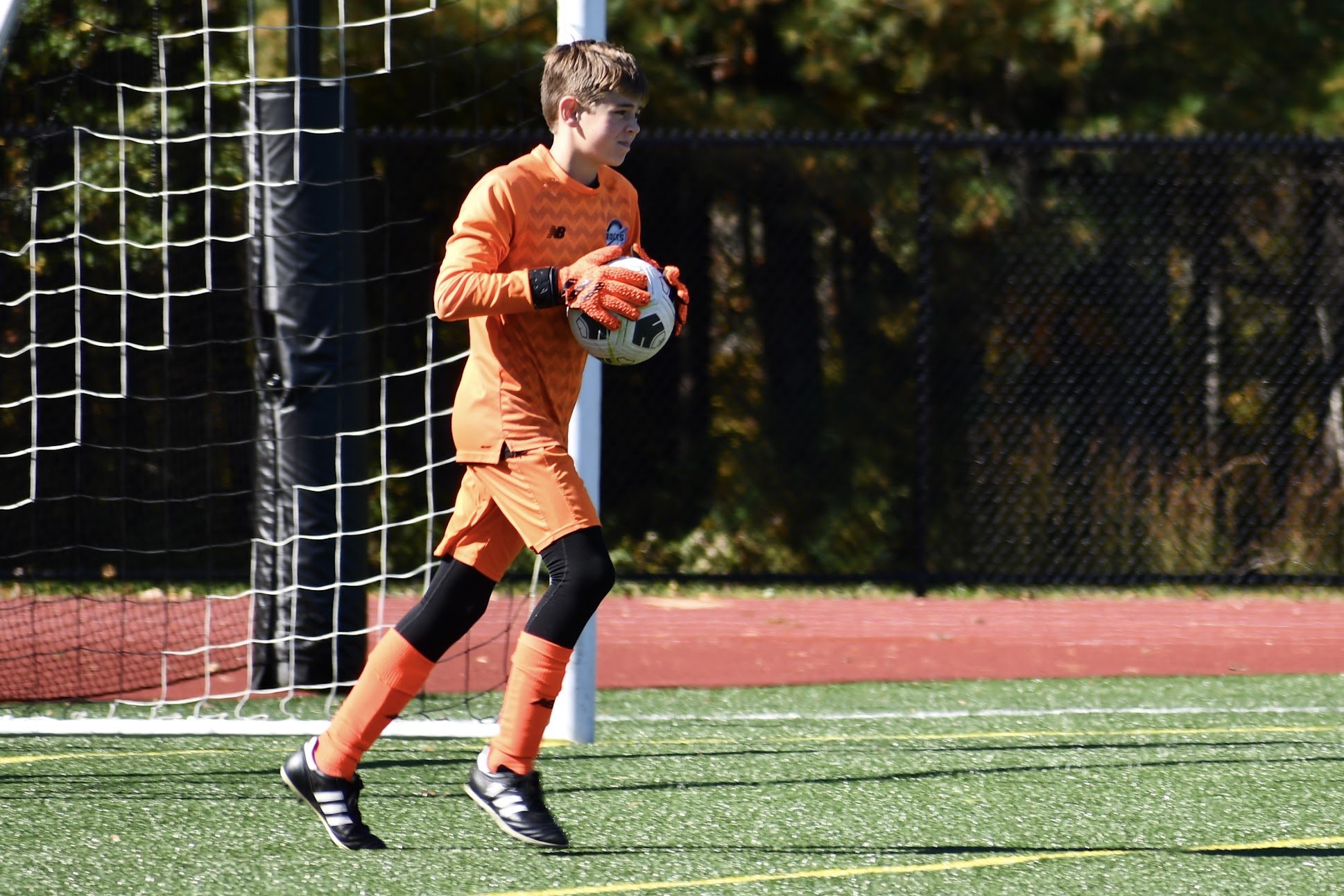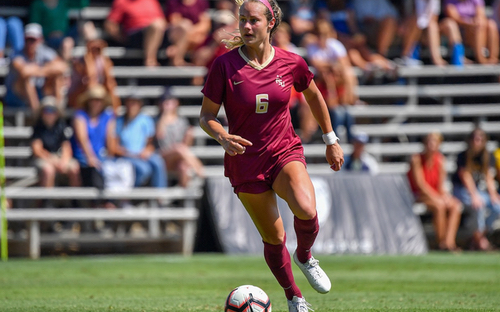
College sports is undergoing one of its biggest transformations in decades. For the first time ever, college athletes will be able to make money through endorsements and marketing campaigns by selling their name, image and likeness (NIL). This is a massive shift for the NCAA, which for many years used the concept of “amateurism” to regulate how athletes were able to make money.
Within the first few days of this rule change on July 1, college athletes began cashing in. BBQ restaurants in Arkansas, a fireworks warehouse in Iowa, and even PetSmart signed sponsorship deals with college players. Florida State’s soccer standout Jaelin Howell, winner of the Herman Trophy and a veteran of the USWNT, was one of the first college soccer players to cash in.
But at the high school level, there is still a fight to defend amateurism and a patchwork of regulations barring athletes from making money. The National Federation of State High School Associations has noted that profiting off NIL in relation to their teams is prohibited. And states across the country have their own laws governing whether high school players can make money off of NIL. For instance, in California, the Interscholastic Federation rule states that students can participate in “endorsements provided there is no school team or school affiliation.” In North Carolina, there is no NIL law at all.
Twitter reactions to the NIL rule changes
20 year starter Britain Covey of the Utah Utes has become the official spokesperson for life alert pic.twitter.com/68MzIZuvnr
— PUDDLES (@scoduckz) July 1, 2021
Other state organizations, like the University Interscholastic League in Texas, have strict policies and are already seeing controversies arise from the pressure to grant NIL opportunities to high school players, particularly for basketball and football players who have massive follows and therefore massive earnings potential.
Take the case of Ryan Agarwal, a Texas player who is one of the top high school basketball stars in the country, who was gifted an NFT. An NFT is a valuable digital trading card with Agarwal’s own highlights featured in it, which can typically be sold for a high value. Yet Agarwal can’t sell this NFT until he’s done with high school basketball, or he would risk losing his high school eligibility.
“We don’t have our head in the sand,” stated Karissa Niehoff, the executive director of the National Federation of State High School Associations. “We know that young people can be entrepreneurs, but please don’t do that with your high school jersey on. It would be very disruptive.”
🚨 BREAKING 🚨
— Kyle Umlang (@kyleumlang) July 1, 2021
Austin, TX – The University of Texas becomes the first school to allow their players to add their own endorsement flair pieces to their uniform on the dawn of #NIL #ThisIsTexas #HookEm 🤘🏽 pic.twitter.com/Q9Av7DbTzz
Massive Market for High School Marketing Opportunities
In some cases, high school athletes have more followers than college and professional-level athletes. Mikey Williams, a junior guard who attends Lake Norman Christian School in North Carolina and has 3.1 million followers on Instagram. San Diego Padres shortstop Fernando Tatis Jr., who signed a $330 million contract this year, has only 1.1 million followers. At some point, the earning potential outside of high school NIL rules will outweigh an athlete’s need to stay in school.
In one prime example of how the NIL rule changes are affecting marketable high school athletes, Quinn Ewers, the best-known high school football player in the country, is weighing whether to graduate early and skip his senior year of high school in Texas or to give up 7-figure marketing opportunities under the new NIL rules. Texas’s strict governing body are barring him from cashing in, so he may walk away from Texas completely.
Pressure to Build a Following
The immediate downward pressure for most high school athletes will now be to craft a brand image and build a social media presence to take full advantage of the NIL marketing opportunities in college. Even college athletes are feeling this pressure; many players never invested much effort in building a social media presence, and now their peers are raking in thousands of dollars based on their Instagram follower counts.
High school athletes hoping to play in college already face pressure to build brands and social media followings to catch the eyes of college coaches. With high school athletes already strapped for time, will NIL rules create new pressures that detract from the high school experience? Will top athletes now need to carve out time to become content creators for social media accounts, adding stress to these formative years for youth players?
Another question is whether individual players with massive followings and endorsement deals will detract from the high school team dynamic. As one coach stated, “High school coaches don’t want to see things on social media — college coaches don’t, either — that sort of detract from the larger team or are negative in any way. So there’s this balance of, the more you call attention to yourself online, are you doing it in a way that is positive? The kids, I don’t feel like they get free rein on this, but they do have the ability to promote themselves hopefully in a positive way. And I think that’s a good thing. And I think the chance for them to capitalize on it is only a good thing as well.”
A Lose-Lose Scenario for High School Programs
If the best high school players, like Quinn Ewers, opt out of high school at the peak of their abilities, what does that mean for high school sports programs? High school sports are a big business in many parts of the country. Ewers plays for Southlake Carroll in a $15 million stadium. If star players opt-out, will high schools be able to fill 12k seat stadiums?
Another question is whether private leagues will surpass high school sports as a means to avoid amateurism rules at the high school level. Take the case of North Carolina Basketball Player Mikey Williams, who played basketball at Vertical Academy (not sanctioned by an organization like the NFHS or a state high school league) while attending high school elsewhere. He was able to sign a marketing agreement with Excel Sports Management and may earn seven figures from his endorsements, while players for high school teams can earn nothing.
Currently, most high school athletes are abiding by the old rules. The vast, vast majority of high school athletes will be unaffected by NIL guidelines one way or another, since the earning potential is small for all but the most elite athletes who build a national reputation.
Always Be Recording
The NIL rule changes are part of a larger trend in which young athletes, for the first time in history, are able to efficiently record all their games. Trace, the only game film system that delivers highlights directly to player inboxes immediately following matches, is one way that top soccer talent is using video to begin building their brands at an early age. Trace’s advanced technology takes all the work out of game film, so there is no more time wasted in front of a computer watching full game footage and then struggling to export clips of individual players.

